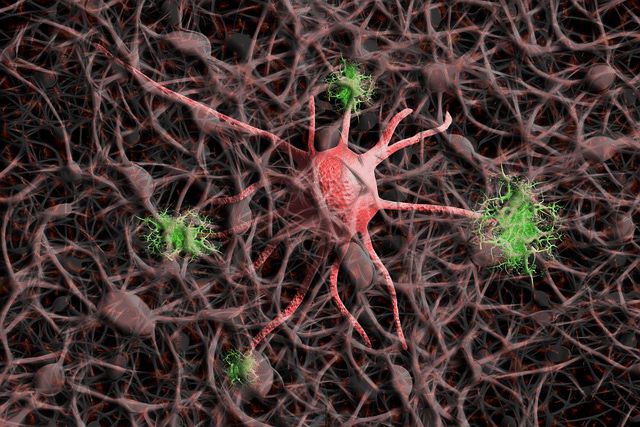Imagine yourself on a vacation! After months of hard work, you decided to pack your bag and head towards an unexplored destination that was on your bucket list. The wanderer within you is ready to take the first step in that uncharted terrain with lots of excitement and joy. You have done your research and looked at maps and other navigation apps on your mobile devices to prepare yourself for it. However, at the same moment, your brain is gearing up and getting ready to help you through this journey in a much more complex yet efficient way. It starts registering billions of information related to the dimensions of space and time. This results in the generation of a highly specialised real-time spatial navigation system within your brain, which contributes to an essential cognitive ability of recording and recovering location-based information – spatial memory. This article will briefly discuss the emergence of ‘place cells’ and ‘grid cell’, and how it helps in decoding the underpinning neural mechanism for spatial memory.
[read more]
A major milestone in spatial memory research was the discovery of ‘place cells’ by O’Keefe and Dostrovsky (1971). These place cells were specific pyramidal neurons in the hippocampus that were stimulated in response to experiential interaction with a particular location in an environment (figure 1). Brun et al. (2002) later found that the place cells had inputs from the entorhinal cortex suggesting a wider network of neural involvement for spatial memory that included entorhinal-hippocampal circuitry. To explore this circuitry, Fyhn et al. (2004) recorded the signals from dorso-medial entorhinal cortex and found spatially activated neurons similar to place cells. However, there was a presence of silent regions amidst these activated regions. It was later found that these regions had hexagonal or triangular grid pattern (figure 1), and hence these cells of the entorhinal cortex were named ‘grid cells’ (Hafting et al., 2005).

Figure 1. Place cells and Grid cells. Image from the article by Moser et al. (2015)
These findings were based on laboratory studies conducted on animals. It was only a matter of time before these studies were scaled up to human studies. The involvement of hippocampal and parahippocampal regions in human being’s spatial memory is something that has been previously established. In an experiment by Ekstrom et al. (2003), individual neural responses were recorded from 317 neurons (76 hippocampal, 54 parahippocampal, 111 amygdala, and 85 frontal lobe) in seven patients suffering from epilepsy with invasive interventions. The patients were asked to perform tasks in a computer-based virtual town, and it was found the hippocampal and parahippocampal regions were involved in the tasks for spatial memory. However, it was only after the study done by Doeller et al. (2010) using functional magnetic resonance imaging (fMRI) when the presence of grid cells was suggested in humans. Whole brain fMRI was done on 42 human participants while participating in a virtual spatial memory experimental. They reported significant sinusoidal modulation of six-fold rotational symmetry suggestive of grid like symmetry in entorhinal cortices. Further grid-like neuronal activity for human spatial navigation was also reported by Jacobs et al. (2013).
As exciting as it may seem, it is just the beginning of our attempts to unravel the mysteries of the brain. The networks within our brain are intertwined at a much complex level. Whole brain imaging suggests that there are several other regions connected with hippocampal and parahippocampal regions that interact at various levels to provide us with what seems to be a simple spatial navigation ability. Nevertheless, these findings open doors to further our understanding about the underlying mechanism of higher cognitive abilities such as explicit autobiographical memory recollection or meta-cognition.
References
Brun, V. H., Otnass, M. K., Molden, S., Steffenach, H., Witter, M. P., Moser, M., & Moser, E. I. (2002). Place cells and place recognition maintained by direct entorhinal-hippocampal circuitry. Science (New York, N.Y.), 296(5576), 2243-2246. 10.1126/science.1071089
Doeller, C. F., Barry, C., & Burgess, N. (2010). Evidence for grid cells in a human memory network. Nature, 463(7281), 657-661. 10.1038/nature08704
Ekstrom, A. D., Kahana, M. J., Caplan, J. B., Fields, T. A., Isham, E. A., Newman, E. L., & Fried, I. (2003). Cellular networks underlying human spatial navigation. Nature, 425(6954), 184-188. 10.1038/nature01964
Fyhn, M., Molden, S., Witter, M. P., Moser, E. I., & Moser, M. (2004). Spatial representation in the entorhinal cortex. Science (New York, N.Y.), 305(5688), 1258-1264. 10.1126/science.1099901
Hafting, T., Fyhn, M., Molden, S., Moser, M., & Moser, E. I. (2005). Microstructure of a spatial map in the entorhinal cortex. Nature, 436(7052), 801-806. 10.1038/nature03721
Jacobs, J., Weidemann, C. T., Miller, J. F., Solway, A., Burke, J., Wei, X., Suthana, N., Sperling, M., Sharan, A. D., Fried, I., & Kahana, M. J. (2013). Direct recordings of grid-like neuronal activity in human spatial navigation. Nature Neuroscience, 16(9), 1188-1190. 10.1038/nn.3466
Moser, M., Rowland, D. C., & Moser, E. I. (2015). Place cells, grid cells, and memory. Cold Spring Harbor Perspectives in Biology, 7(2), a021808. 10.1101/cshperspect.a021808
O’Keefe, J., & Dostrovsky, J. (1971). The hippocampus as a spatial map. Preliminary evidence from unit activity in the freely-moving rat. Brain Research, 34(1), 171-175. 10.1016/0006-8993(71)90358-1[/read]





Leave a Reply